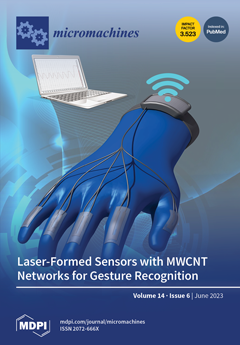Open AccessReview
MXene-Based Nanocomposites for Piezoelectric and Triboelectric Energy Harvesting Applications
by
Durga Prasad Pabba, Mani Satthiyaraju, Ananthakumar Ramasdoss, Pandurengan Sakthivel, Natarajan Chidhambaram, Shanmugasundar Dhanabalan, Carolina Venegas Abarzúa, Mauricio J. Morel, Rednam Udayabhaskar, Ramalinga Viswanathan Mangalaraja, Radhamanohar Aepuru, Sathish-Kumar Kamaraj, Praveen Kumar Murugesan and Arun Thirumurugan
Cited by 28 | Viewed by 8137
Abstract
Due to its superior advantages in terms of electronegativity, metallic conductivity, mechanical flexibility, customizable surface chemistry, etc., 2D MXenes for nanogenerators have demonstrated significant progress. In order to push scientific design strategies for the practical application of nanogenerators from the viewpoints of the
[...] Read more.
Due to its superior advantages in terms of electronegativity, metallic conductivity, mechanical flexibility, customizable surface chemistry, etc., 2D MXenes for nanogenerators have demonstrated significant progress. In order to push scientific design strategies for the practical application of nanogenerators from the viewpoints of the basic aspect and recent advancements, this systematic review covers the most recent developments of MXenes for nanogenerators in its first section. In the second section, the importance of renewable energy and an introduction to nanogenerators, major classifications, and their working principles are discussed. At the end of this section, various materials used for energy harvesting and frequent combos of MXene with other active materials are described in detail together with the essential framework of nanogenerators. In the third, fourth, and fifth sections, the materials used for nanogenerators, MXene synthesis along with its properties, and MXene nanocomposites with polymeric materials are discussed in detail with the recent progress and challenges for their use in nanogenerator applications. In the sixth section, a thorough discussion of the design strategies and internal improvement mechanisms of MXenes and the composite materials for nanogenerators with 3D printing technologies are presented. Finally, we summarize the key points discussed throughout this review and discuss some thoughts on potential approaches for nanocomposite materials based on MXenes that could be used in nanogenerators for better performance.
Full article
►▼
Show Figures






